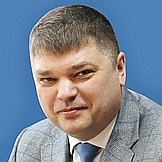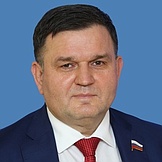Regional flags and emblems


Profile
Established 1 August 1927
The Leningrad Region is part of the Northwestern Federal District
Area 83,900 sq km
Population 2 057 700 (2025)
Ethnic groups
(2020 National Census, %)
Russian – 93,73
Other – 6,27
Administrative divisions (2024)
Municipal districts – 17
City districts – 1
Rural towns – 67
Rural districts – 120
Geography and climate
The Leningrad Region is situated in the northwest of European Russia. It is washed by the Gulf of Finland of the Baltic Sea, and lakes Ladoga and Onega. Most of the area is lowlands: Baltiyskaya, Prinevskaya, Vuoksinskaya, Svirskaya, etc. The elevated Karelian Isthmus stretches between the Gulf of Finland and Lake Ladoga, and the Baltic Klint (about 300 m high) is to the south.
It borders on the Republic of Karelia, the Vologda, Novgorod, and Pskov regions, as well as on Estonia and Finland.
There are 5,000 rivers and streams in the region, 41,600 lakes and 6 large reservoirs: Narvskoye, Nizhnesvirskoye, Verkhnevirskoye, Volkhovskoye, Luzhskoye, and Nizhneoredezhskoye. The largest lakes are Ladoga, Onega, Vuoksa, Otradnoye, Sukhodolsk, Glubokoye, Komsomolsk, Samro, and Viale. The main rivers are the Neva, Volkhov, Svir, Luga and Vuoksa.
The climate is transitional from marine to continental. January temperatures average –3,9°C, July temperatures average 19,4°C. Precipitation averages 44 mm in January and 79 mm in July.
Vegetation: mixed forests (spruce, pine, birch).
Soils: podzol, sod-podzol and wetland.
There are 27 state nature reserves, four protected areas and 18 natural monuments in the region.
Government
The legislative branch is represented by the Legislative Assembly of the Leningrad Region, which is the permanent, representative and only body of legislative authority in the region.
The Legislative Assembly has 50 deputies elected for five years, with 25 of them running in single-mandate constituencies and the other 25 in the single electoral district, where winners are identified in proportion to the number of votes cast for lists of candidates nominated by political parties.
The current Legislative Assembly of the Leningrad Region was elected in September 2021. Its term expires in September 2026.
The executive branch comprises the Government of the Leningrad Region headed by the Governor, plus branch, territorial and other executive authorities.
The Government of the Leningrad Region is the permanent supreme executive body of the Leningrad Region, formed by the region’s Governor.
The Governor of the Leningrad Region is the region’s highest-ranking official and head of the regional Government, elected for five years by Russian citizens who permanently reside in the region.
The term of office of the current incumbent expires in September 2025.
Economy and natural resources
The Leningrad Region is one of the most developed industrial regions in the Northwestern Federal District, with economic potential based on industrial output, which accounts for over 35% of the regional GDP.
The regional industry has a diversified structure dominated by mining, processing industries and the production and distribution of electricity, gas and water.
The leading industries are machine building, the automotive industry, shipbuilding, the chemical industry, the pulp and paper industry, the metal industry, and the construction materials industry.
Local industrial facilities roll out the following industrial and consumer products: cars, tires, electricity, heat, paper, cardboard, automobile gasoline, fuel oil, diesel fuel, mineral fertiliser, abrasive tools and construction aggregate.
The mining sector includes proven deposits of oil shale, peat, phosphorite, limestone, building stone, sand and gravel, brick-tile clay, facing stone, flux limestone and bauxite.
The diversified agricultural sector accounts for about 6% of the regional GDP. Crop and seed production, as well as cattle breeding, are well developed. Locally produced poultry meat is in high demand outside the region.
Culture and tourism
The Leningrad Region sits on ancient lands with a rich centuries-old history and is considered one of the cultural centers in the country. It is not surprising that each of its districts have remarkable museums, and unique historical and cultural landmarks. There are the fortresses of Vyborg, Shlisselburg, Priozersk, Ivangorod and Koporye; monasteries with magnificent architectural ensembles – the Svirsky Monastery in the Lodeynopolsky District, the Assumption Monastery in Tikhvin, the Holy Trinity Zelenets Monastery in the Volkhov District, and the Monastery of the Nativity of the Holy Mother of God on Island Konevets near Priozersk. It was in this region that the first capital of Ancient Rus, Staraya Ladoga, was established. The Luga, Gatchina, Volosovo and Lomonosov districts in the south of the region feature estates, mansions and summer residences that belonged to prominent figures in the Russian history and culture.
Numerous landmarks in the region are dedicated to the memory of the Great Patriotic War of 1941−1945, a tragic page in the history of our Motherland. The Eternal Flame is lit on two memorials, the Memory of the Fallen in Kirishi and the Broken Circle in the Vsevolozhsky District. There is the Nevsky Patch Memorial in the suburbs of the city of Kirovsk. The memorial is included on the list of the region’s military history landmarks, which are referred to collectively as the Green Belt of Glory.
The Leningrad Region is actively developing professional art and crafts, and is making an effort to preserve the small ethnic groups’ traditions. Both local residents and Russian and foreign tourists attend local holidays and festivals, exhibitions and presentations, concerts and theatre productions, readers' conferences and meetings with famous writers, artists and musicians. These popular events open up new pages of the region’s multifaceted life. About two million people visit the Leningrad Region every year.


